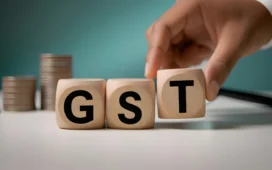In the United States, the annual process of filing tax returns can often seem convoluted and time-consuming, leaving many taxpayers anxiously wondering: “When do I get my tax return?” Depending on various factors such as how and when you file your taxes, the expected timeline can vary. This article will delve into the factors that affect when you get your tax return, and some general time frames that you can expect.
Understanding Tax Returns
First, it’s important to understand what a “tax return” is. Technically, a “tax return” is the form (or forms) that a taxpayer files with the Internal Revenue Service (IRS) or state tax department, detailing their income, deductions, credits, and calculation of the tax they owe for the year. What most people are thinking of when they ask “When do I get my tax return?” is actually the “tax refund,” which is the money returned to a taxpayer by the IRS when their tax payments and withholdings exceed their tax liability for the year.
Filing Methods and Timing
How and when you file your tax return can significantly influence when you receive your refund.
- E-filing: The IRS encourages taxpayers to file their tax returns electronically (e-filing) and opt for direct deposit of their refund. This method is faster, more secure, and usually results in quicker refunds. Once the IRS processes your return, which typically takes 21 days or less if there are no issues, the refund will be deposited directly into your bank account.
- Paper filing: If you choose to file a paper tax return by mail, it generally takes longer for the IRS to process. The processing time for paper tax returns can take six to eight weeks from the date the IRS receives it. Once your return is processed, if you’re due a refund, it will be mailed to you, unless you have specified a direct deposit.
When You File
The IRS typically begins accepting tax returns in late January. The earlier you file, the earlier you are likely to receive your refund, especially if you opt for e-filing and direct deposit. However, do ensure that you have all necessary documents and information to file a complete and accurate return.
Checking Your Refund Status
After filing your return, you can check the status of your refund using the “Where’s My Refund?” tool on the IRS website or the IRS2Go mobile app. You’ll need to provide your Social Security number or ITIN, your filing status, and the exact amount of your refund.
Potential Delays
Various factors can delay the processing of your return and refund. This includes incomplete or inaccurate returns, returns flagged for review, or returns claiming certain tax credits like the Earned Income Tax Credit (EITC) or Additional Child Tax Credit (ACTC). The IRS usually begins issuing refunds for returns claiming these credits in late February.
In conclusion, the question of “When do I get my tax return?” largely depends on how and when you file, and whether there are any issues with your return. To expedite your refund, it’s recommended to e-file your return and opt for direct deposit, file as early as you can, and ensure that your return is complete and accurate.











